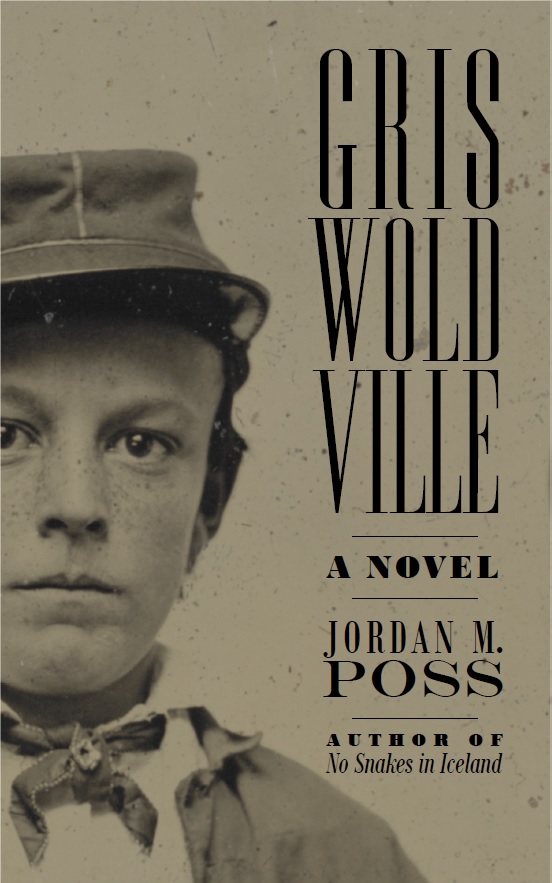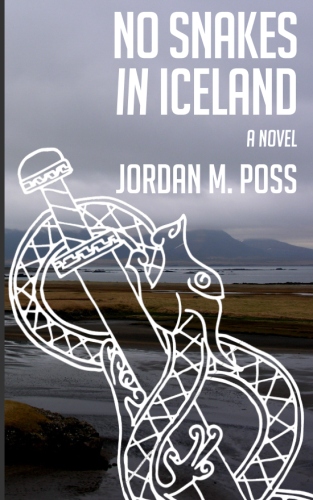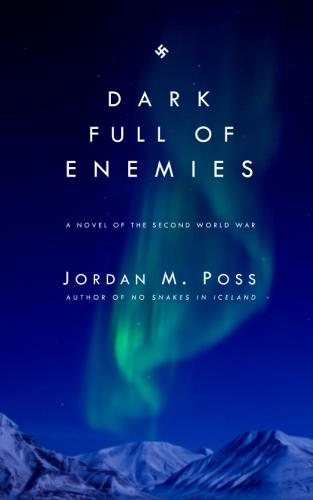Speaking of The Bridge on the River Kwai, in a revealing moment early in the film the antagonist, Col Saito, speaking to his British counterpart about prisoners who had been shot in an escape attempt, shows pride in his enemy’s behavior: “For a brief moment between escape and death… they were soldiers again.”
Well, last week, for a brief moment between TikTok and college football, people cared about history again.
Background and backlash
Briefly, last week podcaster Darryl Cooper of Martyr Made appeared in an interview with Tucker Carlson on Twitter. Carlson feted Cooper as “the best and most honest popular historian” in America, fulsome hyperbole that did Cooper no favors once the discussion started and Cooper ventured his unconventional opinions about World War II. These resulted in immediate controversy.
While early reporting on the interview floated a number of possible points of outrage, including wobbly suggestions of Holocaust denial and—more accurately and damningly—Cooper’s dark insinuations about the Zionists who had financial connections to Winston Churchill, the controversy eventually settled around Cooper’s examination of Churchill’s decision-making and leadership, and not least his description of Churchill as a “psychopath” and “the chief villain” of the war. Churchill’s crimes? Having needlessly antagonized Hitler before the war, bullheadedly refused peace offers during the war, and pushed for things like the strategic bombing of German cities. Cooper even repeats the meme-level cheap shot that Churchill was “a drunk.” (He wasn’t.)
Journalistic outrage-baiting ensued, all conducted in the breathless tone with which I assume Puritans reported the discovery of witches. I found it pretty rich that the same media that justified and celebrated anti-Churchill protests and vandalism in 2020 used a podcaster’s profanation of the same man for clicks. Well, it worked. I couldn’t escape this story as it unfolded.
I don’t intend to wade into the details. Churchill biographer Andrew Roberts, to whom I have referred many times here on the blog, handled those with aplomb in a blistering essay for the Washington Free Beacon. Read that, then follow it up with Roberts’s appearance on the School of War podcast in an episode that dropped just last night. The past week has produced many more apologias for Churchill and critiques of Cooper, but Roberts has done the work and is worth listening to on any subject he’s researched.
For his part, Cooper posted a characteristically discursive response on his Substack, which you can read here.
Hyperreality and post-literate history
What I found interesting and, at first, a little baffling about the controversy from the beginning was the… prosaicness of some of Cooper’s views. Churchill as warmonger, Churchill as manipulator of America, Churchill as the real instigator of the bloodiest war in history, even Churchill as drunk—these are all pretty pedestrian contrarian takes. Pat Buchanan published a book laying out many of these arguments sixteen years ago, and he was drawing on a current of anti-Churchill interpretation that was already decades old. (Roberts does a good job explaining some of the historiography of this controversy on School of War.)
The fact that such perspectives are and ought to be old news to anyone who has studied Churchill or the Second World War even a little bit suggests that most people—journalists, media personalities, podcasters, and the general public—simply haven’t.
For most people, Churchill is a recognizable character with no depth in a simplistic good-and-evil tale rather than a complex real person living through uncertain and dangerous times. This reduction of the man to the icon means that an attack of Cooper’s kind will generate either outrage at the profanation of a sacred image (when, again, we should have heard all this before) or the frisson of the conspiracy theorist discovering forbidden (false) knowledge. Beyond Cooper’s bad history, the fact that this interview generated the controversy that it did is revealing.
It’s this broader context that I’m most interested in, and two essays in particular offer a lot of food for thought in response.
First, writing at Compact, Matthew Walther sees the Carlson-Cooper interview and the resulting controversy as symptoms of a “post-literate history,” there being an “epistemic gulf between the current consensus . . . of practicing historians on any given subject and the attitudes of the ordinary person of general education.” The appetite of the public for charismatic purveyors of dark, hidden truths—usually old, debunked ideas that can still be used to surprise the ignorant—is part of the problem, but historians and educators generally share the blame. Take a few minutes and read the whole essay.
Second, Sebastian Milbank, one of my favorite writers at The Critic, published an essay this morning that only glances across the Cooper controversy as an example of our present absorption into “hyperreality,” an imaginary world shaped by social media that, through information overload and partisan polarization, turns real people and things into symbols and erodes discernment, judgement, and wisdom. Simplification, detachment from reality, the reduction of knowledge and rival truth claims to mere content, and the “openness to everything” of online hyperreality create an environment in which false views appear more inviting, and not only for the ignorant or wicked:
Anyone with a modicum of knowledge will be able to spot the huge gaps in Cooper’s argument here. But what is more interesting is how he came to embrace such a grotesque viewpoint. Cooper isn’t stupid, or wicked, or even ill-informed in a conventional sense. Instead, we could say that he is “overinformed”. He is the product of hyperreality, supersaturated with information to the point that his analytical faculties and sense of reality breaks down. One gets a sense of this in the interview alone, where he describes reading, not systematically, but omnivorously, consuming over eighty books for his podcast on Israel/Palestine, and not being able to recall all the titles.
Milbank’s essay is longer and richer than the discussion surrounding Cooper—and Milbank includes a favorite passage about madness from Chesterton—so be sure to read the whole thing. For an even more dramatic parallel case, including another pertinent Chesterton quotation, see Jonathon Van Maren’s essay on Candace Owens at the European Conservative here.
Caveats and crankery
Churchill lived a long time and involved himself in a lot of things, not always successfully. Far from the “correct” view being the flawless and burnished bronze lion of British defiance in the face of tyranny, Churchill is open to legitimate lines of critique that historians still debate. Irish and Australian critics, for dramatically different reasons, sometimes take a more negative view of Churchill, and he is the object of an entire subfield of anti-imperialist Indian criticism. But all of this is despite the role he played in World War II, and all of these grievances and arguments are subject to evaluation according to the evidence.
Which is the first place Cooper fails. And when Cooper asserts that the reactions to his interview are evidence that he’s correct, he fails even more seriously by falling into a trap I’ve written about here before: crankery.
Cooper is not, as Carlson tried to puff him, an historian. I’ve tried to avoid pointing this out but others, like Niall Ferguson, have been much less polite about it. Cooper is, however, as Walther and Milbank’s essays suggest, a gifted autodidact. But the problem for autodidacts in any field is that their enthusiasm is not a substitute for the basic intellectual formation that formal, guided study by those that have already mastered the subject provides. There is a moral dimension to this as well—enthusiasm and omnivorous reading are no substitutes for sound historical judgement or simple human wisdom.
And so the autodidact blunders into plausible but false theories that, owing to gaps they aren’t even aware of, become their entire frame of reference. “Everything becomes reduced down to a single question or thesis,” as Milbank puts it. Their world view is complete, but too small, according to Chesterton. And if, when questioned on their interpretation, they double down, attack their questioners, or begin to distort their evidence, they risk becoming a crank. Once they begin referring to “them” and an undefined “establishment” with knowing contempt, they’re already there.
This is, more than anything, a good example of why education in history and the humanities more broadly still matters.
Recommended reading
Churchill’s memory lives among those very few men—like Lincoln and Napoleon—who inspire a continuous flow of books. The following are those that I most often recommend:
Churchill, by Sir John Keegan—An excellent and approachable short biography from a great military historian.
The Duel: The Eighty-Day Struggle Between Churchill and Hitler, by John Lukacs—A good look at a specific episode of Churchill’s life, from his appointment as Prime Minister in May 1940 into the summer, with Hitler’s activities at the same time told in quite revealing parallel.
Winston’s War: Churchill 1940-1945, by Max Hastings—An excellent study of Churchill’s time as Prime Minister, with a lot of attention devoted to his frustrating relationship with the United States. A good antidote to at least one of Cooper’s claims.
Churchill: Walking with Destiny, by Andrew Roberts—The big one, a massive and deeply researched comprehensive biography by an expert who, as I said above, has done the work. It shows.
Moral Combat: Good and Evil in World War II, by Michael Burleigh—If you’re interested in the moral and ethical questions raised by the war, this is a more serious and better researched consideration of them than you’ll get from the Carlson interview.
I’d recommend any one of these for a more detailed and nuanced grasp of a great man than any podcast or social media interview can possibly provide.











